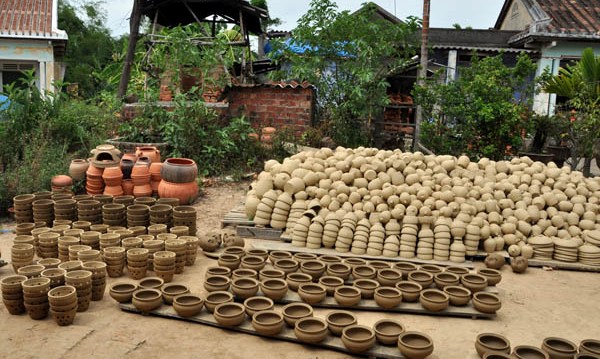Occupation Village: Showcasing Vietnamese Culture

In the early 15th - 16th centuries, immigrants from the North discovered handicraft-making and shared it with the Southern region. Quang Nam was one of those places who was fortunately passed on with the industry and enjoyed a significant level of advancement. Quang Nam was then called the Occupation Village because of several crafts which developed in the place, preserving Vietnamese heritage but at the same time embracing modernization by exporting their original, exceptional products all over the world. The following villages specialize in a specific craft which altogether make up Hoi An.
Pottery at Thanh Ha Village is said to have started at Thanh Hoa Province with clay as the main raw material. High-quality domestic products like bowls, jars, vases, and ornament tree pots are molded into different shapes and colors by skilled artisans. They are sold in souvenir shops which tourists like to bring home. But perhaps more than that, visitors are treated to watching the workers make the beautiful pots themselves.
Carpentry in Vietnam is believed to have originated in the North region, specializing in wood carving and sculpture. Kim Bong carpenters in particular incorporate philosophy and fine arts into their work, but also combining their own designs with styles from Chiem Thanh, China and Japan, among others. Kim Bong carpentry products are exported both in the domestic and foreign market.
Tra Que Vegetable Village is known for producing quality vegetables like lettuce, houttuynia, knoutwed, basil and coriander. They are also used as ingredients for the local delicacies at Quang Nam like soft noodle soup and dry pancake roll with pork. Vegetable planting has been the main source of livelihood in the locality for a long time since the area is made up of a big portion of cultivated land. Today, Quang Nam also supplies vegetables to restaurants and wholesale markets in its own area and in Da Nang City. As a promotional gimmick, tours include teaching visitors how to make the soil fertile, plant vegetables and cook local dishes from the available ingredients. The vegetable industry is doing so well in Quang Nam, producing about billions of VND every year.
Phuoc Kieu Bronze Casting Village is famous for creating wonderful musical instruments like bells, gongs, gong-like musical instruments and house items like incense burners, lamp holders, vases and other bronze musical instruments used in festivals, ceremonies and even day-to-day activities. Phuoc Kieu's musical instruments are unlike any other, each instrument made from a mixture of different metals, therefore creating a distinct sound.
Ma Chau Weaving Village was established in the 15th century wherein only the people with a high status in society like aristocrats and the mandarin classes were supplied with woven silk. Weaving silk is the main occupation of the residents because of its abundance in the locality. When the South Vietnam government approved world trade in the 19thcentury, Ma Chau enjoyed even more increased income and productivity. Wooden looms and half-machines gave way to automated loom machines as the place adapted to urbanization. Moreover, the village expanded to floriculture. Ma Chau Village is also known for its green tree gardens, tea and areca palm hedges.
Dong Yen – Thi Lai Mulberry Silkworm Village is a popular tourist destination because of its elegant silk products like satin, tussore, chiffon and mattresses. The village is made up of 160 hectares of mulberries so almost every resident, if not all, knows about the craft. The village exports its products to East Vietnam and is now involved in a big-scale business in the cities of Bay Hien and Go Vap in Ho Chi Minh City.
Ban Thach Mat Village creates one-of-a-kind mats from jute found along the banks of Thu Bon River. The industry is participated in by mostly women in the community. The mats are exported in the domestic market, but the place is visited often by tourists from all over the world because of its high-quality products.
Cotu Ethnic brocade weaving is mostly done by the women in the village too, creating uniquely beautiful items like blankets, loincloths and skirts made from mainly jute, but also cotton and flax. The brocade products are created manually in traditional looms made of bamboo and wood. The process is delicate and time-consuming, taking days and even a month to make one item. Tourists visiting the village will experience an on-hand brocade weaving lesson by being taught how to weave themselves.









